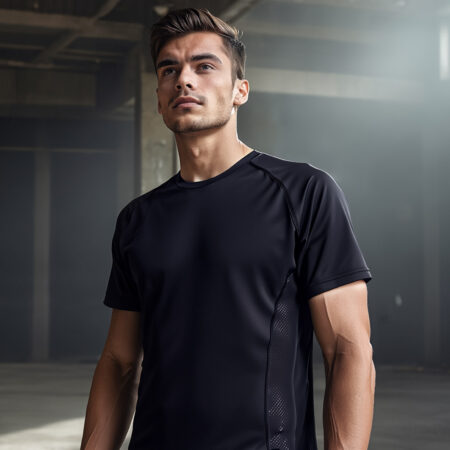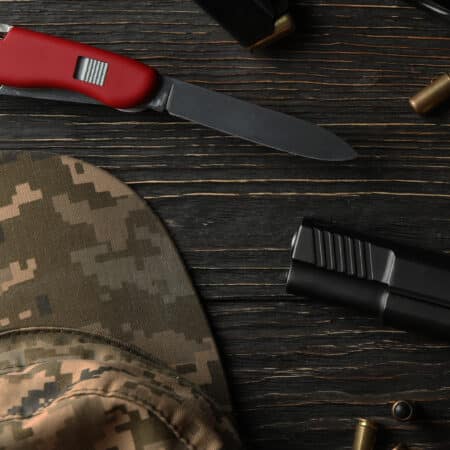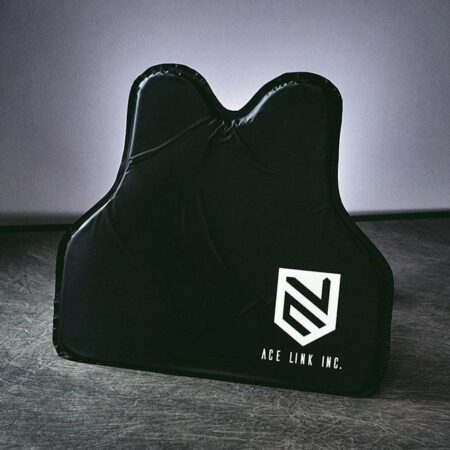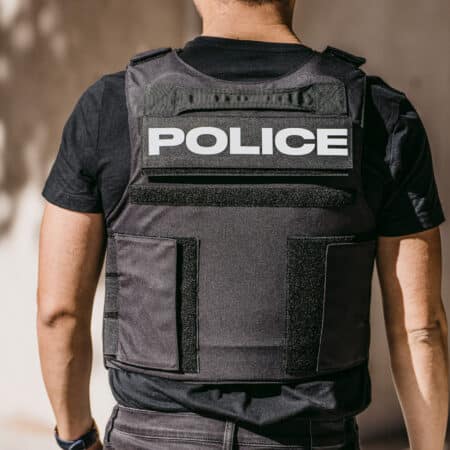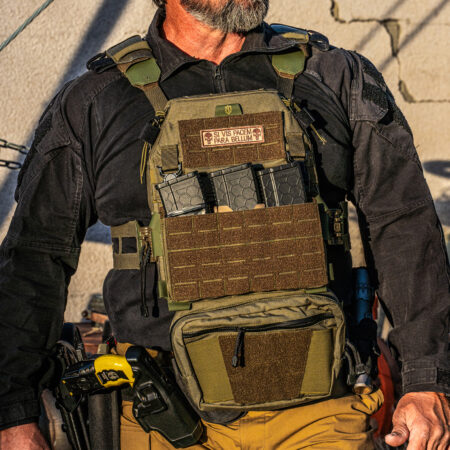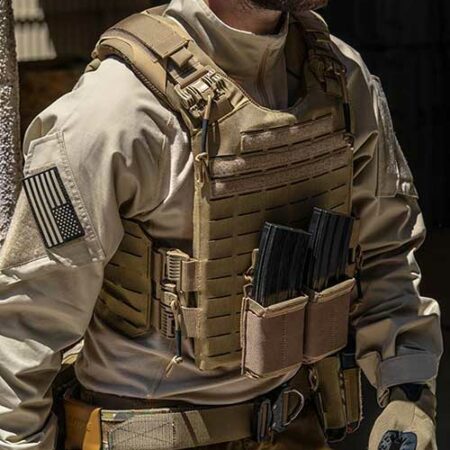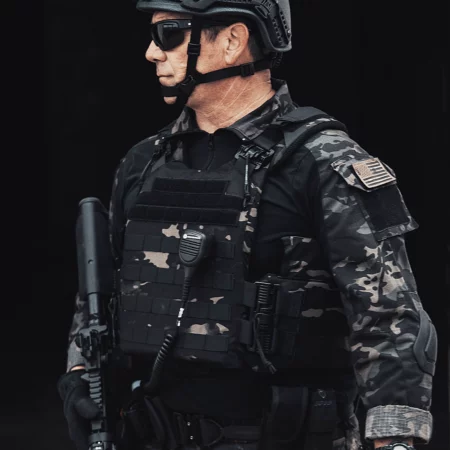- Key Takeaways
- Table of Contents
- Defining Next-Gen Ballistic Helmet Materials
- Key Innovations: Carbon, Ceramics, and Hybrids
- Performance Standards and Testing Protocols
- Comparing Current and Emerging Armor Materials
- Deployment Challenges and Real-World Impacts
- Take the Lead with Next-Gen Ballistic Protection
- Frequently Asked Questions
- Recommended
Did you know that next-generation ballistic helmet materials can now cut helmet weight by up to 35 percent without sacrificing protection? As threats in the field grow more unpredictable, finding gear that combines superior defense with comfort has become more urgent than ever. The latest helmet technologies bring together advanced materials like carbon fiber composites and graphene-enhanced aramids, giving operators lighter, stronger, and more adaptable protection for demanding missions.
Key Takeaways
| Point | Details |
|---|---|
| Advanced Materials Revolution | Innovations like UHMWPE, carbon fiber hybrids, and graphene-enhanced aramids are transforming ballistic helmet design with superior strength and reduced weight. |
| Comprehensive Testing Standards | Modern ballistic helmets undergo rigorous testing protocols that ensure protection against a variety of threats under real-world conditions. |
| Holistic Protection Goals | The emphasis is on creating adaptive, intelligent protective gear that enhances both safety and user mobility in diverse operational environments. |
| Deployment Challenges | Successful real-world application requires addressing environmental adaptability, durability, and cost-effectiveness of advanced materials. |
Table of Contents
- Defining Next-Gen Ballistic Helmet Materials
- Key Innovations: Carbon, Ceramics, And Hybrids
- Performance Standards And Testing Protocols
- Comparing Current And Emerging Armor Materials
- Deployment Challenges And Real-World Impacts
Defining Next-Gen Ballistic Helmet Materials
The evolution of ballistic helmet materials represents a critical frontier in personal protective equipment, moving far beyond traditional Kevlar and Dyneema technologies. Modern tactical professionals require lightweight, multi-threat protection systems that can adapt to increasingly complex operational environments. Next-generation materials are engineered to provide superior ballistic resistance while dramatically reducing weight and improving ergonomic performance.
These advanced materials focus on several key performance characteristics:
- Reduced Weight: Decreasing helmet weight by 25-35% compared to traditional designs
- Enhanced Impact Absorption: Improved blunt trauma protection through advanced liner technologies
- Multi-Threat Capability: Protection against fragmentation, ballistic impacts, and blunt force trauma
- Thermal Management: Integrated cooling and ventilation systems to reduce heat stress
Materials like ultra-high-molecular-weight polyethylene (UHMWPE), advanced carbon fiber composites, and experimental graphene-enhanced aramids are pushing the boundaries of what’s possible in helmet design. Our comprehensive guide on ballistic helmet types explores how these innovative materials translate into real-world protective capabilities. The goal is no longer just stopping projectiles, but creating holistic protection systems that enhance operator mobility, comfort, and mission effectiveness.
The future of ballistic helmet materials isn’t just about stopping threats—it’s about creating intelligent, adaptive protective gear that works seamlessly with the human body. By integrating advanced materials science with ergonomic design principles, manufacturers are developing helmets that are lighter, stronger, and more responsive than ever before.
Key Innovations: Carbon, Ceramics, and Hybrids
The frontier of ballistic helmet protection is being reshaped by groundbreaking material innovations that challenge traditional design paradigms. Hybrid composite materials are emerging as a revolutionary approach, offering unprecedented levels of protection through sophisticated engineering strategies. These advanced materials combine multiple substances to create layered structures that can more effectively dissipate and manage impact energy.
Recent research reveals fascinating developments in material science. According to research exploring polymer matrix sand composites (PMSCs), innovative hybrid structures can be engineered with graded inclusions that strategically erode and absorb projectile energy. Key characteristics of these advanced materials include:
- Multi-Layer Protection: Combining brittle hard zones with supportive tensile layers
- Energy Dissipation: Sophisticated structures that fragment and disperse kinetic impact
- Cost-Effective Design: Tunable composite structures using strategic material inclusions
- Adaptive Resistance: Materials that dynamically respond to different threat profiles
Carbon fiber composites and ceramic-based hybrid materials are particularly promising. These advanced structures leverage nano-engineering principles to create lightweight yet incredibly strong protective layers. Our detailed guide on ballistic helmet types provides deeper insights into how these materials translate into real-world protection. The goal is no longer just stopping projectiles, but creating intelligent systems that can absorb, distribute, and minimize impact forces.
The future of ballistic protection lies in these sophisticated hybrid materials. By integrating advanced ceramic technologies, carbon fiber innovations, and strategic composite designs, manufacturers are developing helmet systems that offer unprecedented levels of protection while maintaining critical mobility and comfort for tactical operators.
Performance Standards and Testing Protocols
Ballistic helmet performance is rigorously evaluated through comprehensive testing protocols that ensure the highest levels of protection and reliability for tactical professionals. Performance standards represent the critical benchmarks that separate effective protective equipment from potentially life-threatening gear. These standards go far beyond simple pass/fail metrics, incorporating sophisticated testing methodologies that simulate real-world threat scenarios.
According to the NIJ Standard 0101.07, modern testing protocols have significantly evolved to address complex protection requirements. Key testing criteria include:
- Threat Level Verification: Precise measurement of projectile resistance
- Backface Deformation Assessment: Evaluating potential blunt trauma transmission
- Women-Focused Testing Protocols: Incorporating diverse body armor requirements
- Dynamic Impact Simulation: Replicating real-world ballistic encounter conditions
The latest NIJ Standard 0123.00 introduces a modular approach to defining ballistic protection levels, allowing for more granular and adaptable testing methodologies. Our comprehensive guide on ballistic helmet types provides additional insights into how these standards translate into practical protection. These protocols ensure that modern ballistic helmets are not just tested, but thoroughly validated against an expansive range of potential threats.

The ultimate goal of these rigorous testing standards is to provide tactical professionals with equipment they can trust absolutely. By continuously refining testing protocols, manufacturers and standards organizations create a critical feedback loop that drives innovation, improves protective capabilities, and ultimately saves lives in high-risk operational environments.
Comparing Current and Emerging Armor Materials
The landscape of ballistic protection is undergoing a dramatic transformation, with current materials being rapidly challenged by innovative next-generation solutions. Traditional armor materials like Kevlar and Dyneema have long been the gold standard, but emerging technologies are pushing the boundaries of what’s possible in protective equipment.
According to research on Spectra Shield, ultra-high-molecular-weight polyethylene composites represent a significant advancement in current armor technology. Key characteristics of modern armor materials include:
- Weight Optimization: Reducing protection system mass by 30-40%
- Flexibility Enhancement: Improving user mobility and comfort
- Multi-Threat Resistance: Capability to protect against varied ballistic threats
- Thermal Management: Better heat dissipation and wearer comfort
Laminate technologies are another fascinating frontier. According to Honeywell’s Gold Flex research, non-woven Kevlar-based laminates demonstrate how existing materials can be dramatically optimized. Our comprehensive guide on soft graphene armor provides deeper insights into these revolutionary material developments. The emerging materials are not just about stopping projectiles, but creating intelligent, adaptive protection systems that work in harmony with the human body.
The future of armor materials is about creating holistic protection solutions that balance weight, flexibility, and threat resistance. By integrating advanced composite technologies, nano-engineering principles, and sophisticated material science, manufacturers are developing armor systems that offer unprecedented levels of protection while maintaining critical operator mobility and comfort.
Here’s a comparison of current and next-gen ballistic helmet materials:
| Material Type | Weight Reduction | Ballistic Resistance | Flexibility & Comfort |
|---|---|---|---|
| Kevlar (Traditional) | Baseline | High (NIJ IIIA) | Moderate |
| Dyneema | 20-30% | High (NIJ IIIA) | Good |
| UHMWPE Composites | 30-40% | Superior (varied threats) | Excellent |
| Carbon Fiber Hybrids | 25-35% | Superior, multi-threat | Excellent |
| Graphene-Enhanced PE | 35-45% | Advanced, multi-threat | Exceptional |
Deployment Challenges and Real-World Impacts
The transition from laboratory innovations to real-world tactical deployment represents a complex landscape of challenges and critical performance requirements for next-generation ballistic protection. Operational environments demand far more than theoretical material performance, requiring equipment that can withstand extreme conditions while providing consistent, reliable protection for tactical professionals.
Deploying advanced ballistic materials introduces several critical considerations:
- Environmental Adaptability: Maintaining protective integrity across temperature ranges from -40°F to 130°F
- Durability Under Sustained Use: Preserving material integrity through repeated high-stress encounters
- Ergonomic Integration: Ensuring minimal performance compromise for user mobility
- Cost-Effectiveness: Balancing advanced protection with practical procurement constraints
Tactical readiness ultimately depends on how these innovative materials perform beyond controlled testing scenarios. Our comprehensive guide on ballistic helmet types explores the nuanced requirements for real-world protective equipment. The most sophisticated material innovations mean nothing if they cannot consistently perform under unpredictable, high-stress operational conditions. This means developing armor systems that not only stop projectiles but do so while maintaining user comfort, reducing fatigue, and supporting mission-critical mobility.
The future of ballistic protection lies in creating intelligent, adaptive systems that seamlessly integrate advanced material science with practical operational requirements. By continuously refining our understanding of material performance, thermal dynamics, and human factors, manufacturers can develop protective equipment that doesn’t just defend against threats, but actively supports the tactical professional’s mission effectiveness and survivability.
Take the Lead with Next-Gen Ballistic Protection
Staying ahead of evolving threats is a real challenge for security professionals, law enforcement, and responsible civilians alike. As highlighted in “Next-Gen Ballistics: Beyond Kevlar & Dyneema,” it is not just about stopping bullets anymore. Operators need lighter gear, adaptive protection, and advanced materials that can handle multi-threat scenarios while improving comfort and mobility. Traditional materials like Kevlar serve a purpose, but modern environments demand ballistic helmets and body armor that excel with next-generation technologies such as UHMWPE composites and hybrid carbon fiber solutions.
If you believe in upgrading your safety now and not settling for outdated standards, you need gear that passes the most rigorous NIJ testing protocols and anticipates tomorrow’s threats. Discover the difference for yourself. Explore our full range of high-performance ballistic helmets and body armor engineered for real-world missions. Take the next step and see why dedicated professionals trust AcelinkArmor.com for uncompromising quality and cutting-edge materials. Advanced protection is in reach—make your move today.
Frequently Asked Questions
What are next-gen ballistic helmet materials?
Next-gen ballistic helmet materials include ultra-high-molecular-weight polyethylene (UHMWPE), advanced carbon fiber composites, and graphene-enhanced aramids, which provide superior ballistic resistance and reduced weight compared to traditional materials like Kevlar and Dyneema.
How do hybrid composite materials improve ballistic protection?
Hybrid composite materials combine multiple substances to create layered structures that effectively dissipate impact energy, offering enhanced protection from both ballistic impacts and blunt force trauma through advanced engineering strategies.
What are the performance standards for ballistic helmets?
Ballistic helmets are evaluated against performance standards such as threat level verification, backface deformation assessment, and dynamic impact simulation, ensuring they provide reliable protection under various threat scenarios.
What are the deployment challenges of next-gen ballistic helmets in real-world scenarios?
Deployment challenges include maintaining protective integrity in extreme temperatures, ensuring durability during sustained use, integrating ergonomics for mobility, and balancing advanced protection with cost-effectiveness.
Recommended
- Understanding UHMW PE vs. Aramid for Bulletproof Vest – Ace Link Armor
- Bulletproof Armor Insert 10×12″ Aramid Flexcore – Ace Link Armor
- 6×13″ Level 3A Side Armor Insert – Ace Link Armor
- Understanding Ballistic Helmet Comfort Pads: What They Are – Ace Link Armor



